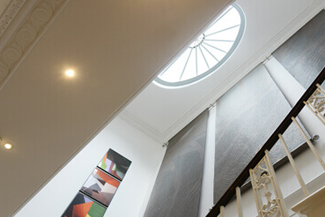Standard dermal fillers W1 that we use in our clinic are hyaluronic acid based. This naturally occurring compound reduces with age, but let’s talk more about exactly how we use it.

Hyaluronic acid is an inert hydrophilic compound; when mixed with an appropriate quantity of water, it is hydrated into a thick gel. In its natural role, it fills and adds volume to our tissues. And makes up approximately 10% of our body tissue, but that varies with age, with older people having significantly less. There is a lot of hyaluronic acid in facial tissues, that is one of the contributing factors behind a sagging and a gaunt appearance as we age.
Thankfully, hyaluronic acid can easily be produced in bacteria and then grown in a sterile vat, (in much the same way that common beer is brewed) having a cheap and plentiful quantity for the use in cosmetic procedures.
Injection methods
Hyaluronic acid is administered via injection directly into the area where it is required. Very thin needles are used and it is well tolerated by most patients. Dermal fillers W1can be administered with numbing agents if you would prefer. Different injection techniques are used to get the most from the filler, depending on your aesthetic goals, but let’s go through some of the more generic ones.
Micro-papular technique
Filler is applied with many small injections just under the skin, 2 to 4 mm apart. The small droplets of filler are used to cover wide areas quickly, giving an even increase in volume. This is considered the most effective for rehydrating or rejuvenating areas using fillers, which are going to have an effect on the skin and immediately plump the area.
Sandwich method
The sandwich method involves injecting two portions of filler into different layers of skin. The skin between the two fillers stops the first from merging with the latter injection. It allows a great deal of height to be gained and can be used to give structure to parts of the face that have lost definition.
Threading injections
When filler is “threaded” a longer needle is placed under the skin parallel to the surface. Then, as the filler is deposited, the needle is withdrawn; this leaves a line of filler in the tissue where the needle once was.
Fanning
A larger extension of the threading technique, where the new filler is placed multiple times under the tissue from the same origin, it creates a set of lines of filler all coming back to the same injection site like the spines on a fan. It is used to cover the wide areas of the face, like the cheeks.
How long do fillers last?
Different injection techniques will advertise different features of the face or mitigate different issues, but will not change the overall length of time that the fillers take to break down. This is usually noticeable 6 months after treatment and they are completely reabsorbed within 12 months. Many patients will choose to have top-up treatments with us to maintain their dermal fillers W1 after 6 months.
